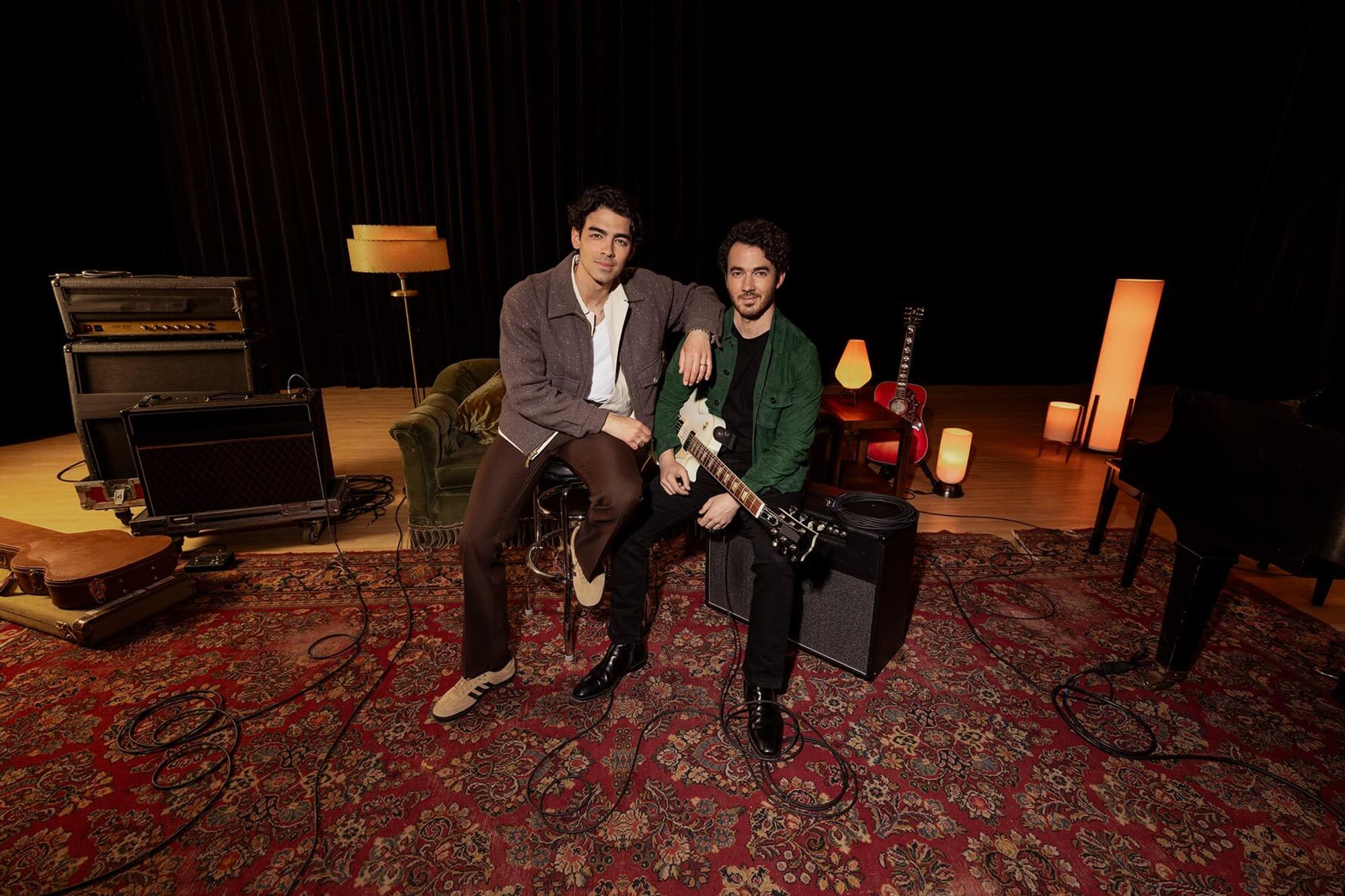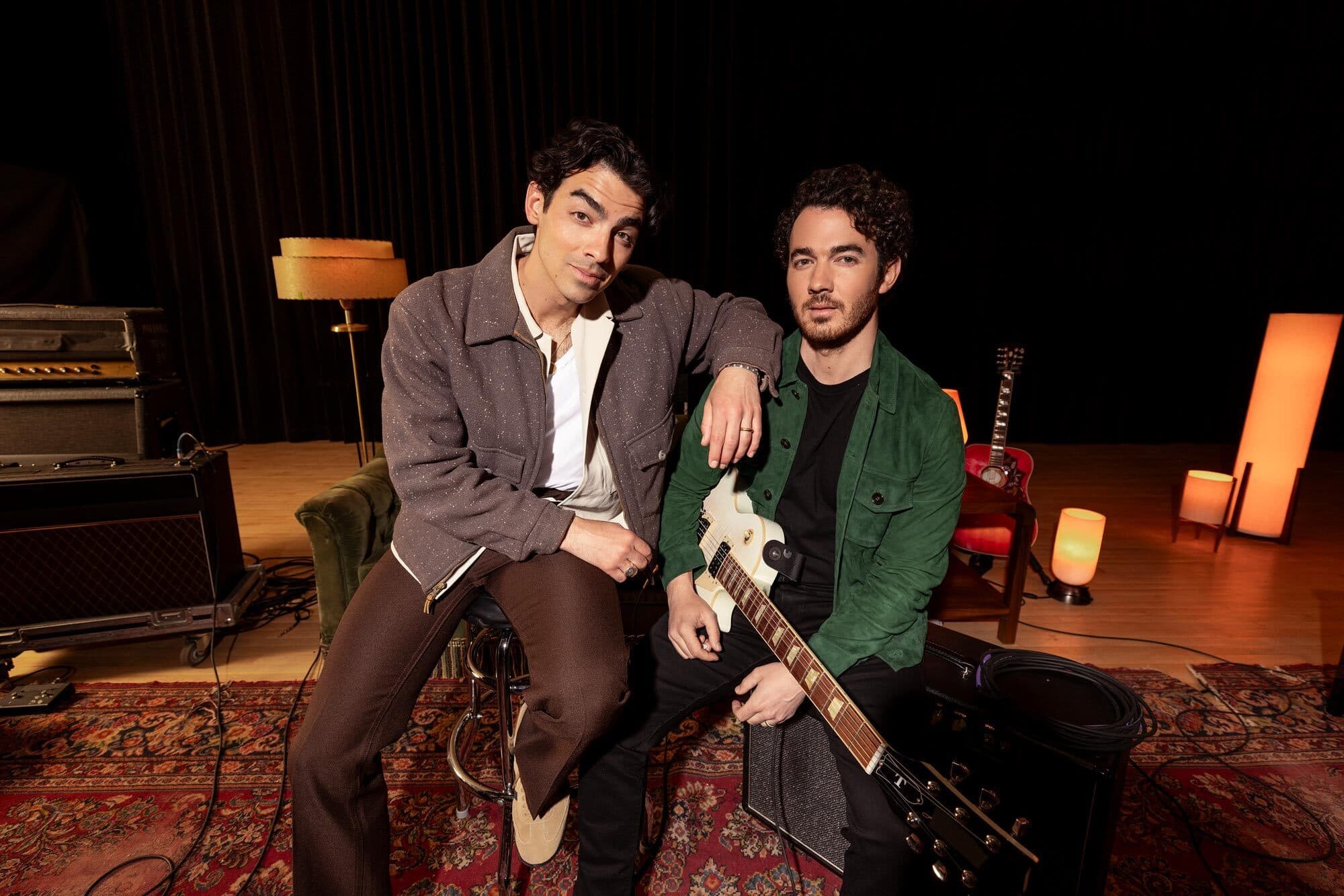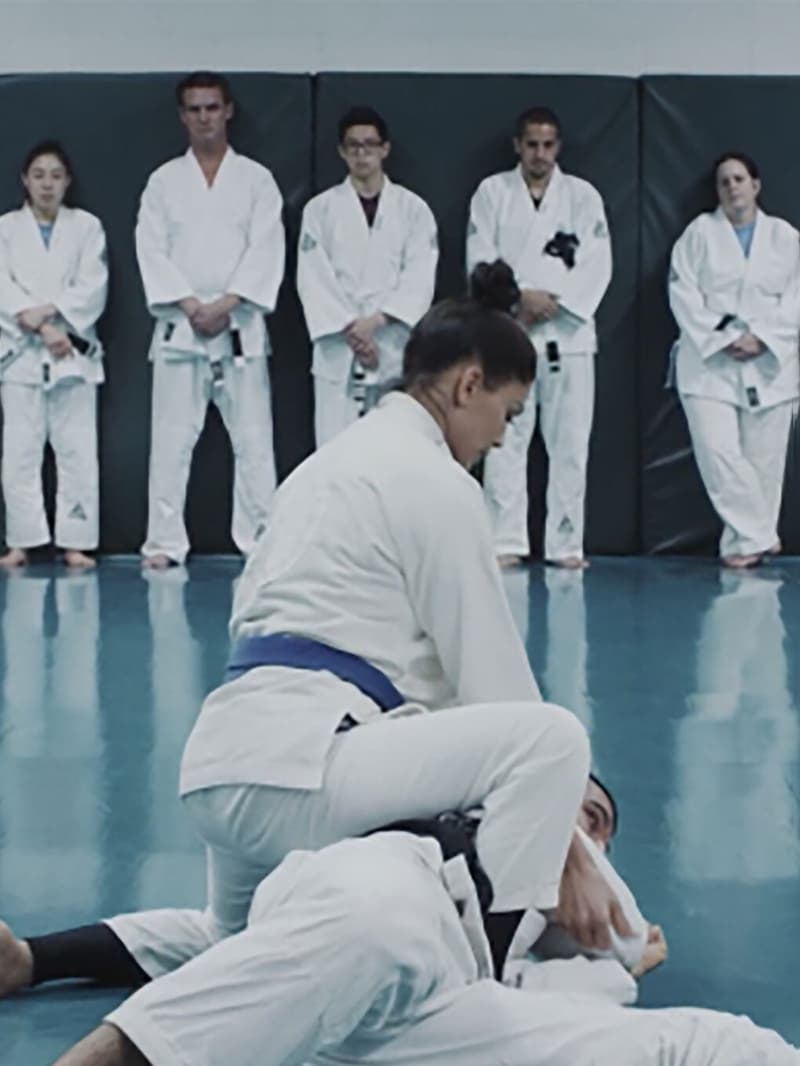Ein Gespräch mit Kevin und Joe Jonas
Die weltweiten Superstars und Musiker berichten, wie die EVO ihr Leben verändert hat.
Die weltweiten Superstars und Musiker berichten, wie die EVO ihr Leben verändert hat.

Kevin und Joe Jonas über ihren Weg zur Sehkorrektur
Sie kennen Kevin und Joe Jonas wahrscheinlich als zwei Drittel der berühmten Band „The Jonas Brothers“. Trotz ihrer globalen Berühmtheit und Erfolge, sahen sich die Brüder jedoch mit einem Problem konfrontiert, das viele Menschen weltweit kennen: Fehlsichtigkeit.
Seit ihrer Kindheit waren beide Musiker kurzsichtig. Das bedeutet, dass sie in der Nähe gut sehen konnten – nicht jedoch in der Ferne. Kurzsichtigkeit ist die weltweit am weitesten verbreitete Fehlsichtigkeit mit einer stark steigenden Tendenz. Nicht nur auf der Bühne waren Kontaktlinsen und Brille eine tägliche Belastung für Kevin und Joe. Sie wollten eine langfristige Lösung finden, die es ihnen ermöglichen würde, das Leben voll und ganz zu genießen.
Und dann kam die EVO ICL: Eine innovative Sehkorrektur, die sie von Kontaktlinsen und Brille befreit und ihr Leben für immer verändert hat. EVO ICL ist eine klinisch getestete implantierbare Linse, die Tag und Nacht1,3 eine klare, scharfe Sicht1,2 ermöglicht, keine Symptomatik trockener Augen verursacht4,5 und die Hornhaut erhält. Außerdem kann sie jederzeit durch einen Arzt wieder entfernt werden, was Flexibilität für die Zukunft bedeutet.

Warum sich Kevin und Joe Jonas für die EVO ICL Linse entschieden haben
“Eine klassische LASIK Augen-OP hat sich für mich nie gut angefühlt. Als ich dann von dieser Methode erfahren habe, war es für mich klar. Und nachdem mein Bruder Joe die OP bereits hatte und völlig aus dem Häuschen darüber war, wie gut er nun sehen konnte, wusste ich einfach, dass ich das auch brauchte. Ich hatte vergessen, wie es sich anfühlt, aufzuwachen und einfach perfekt zu sehen. Heute muss ich mir keine Sorgen mehr um Kontaktlinsen oder meine Brille machen und ich fühle mich so viel freier.“ – Kevin Jonas
„Nachdem ich mit meinem Arzt über diese fortschrittliche neue Technologie gesprochen hatte, habe ich mich für die EVO entschieden, weil ich das Gefühl hatte, endlich meine Sehkraft verbessern zu müssen und weil ich die Art, wie ich die Welt sehe, verändern wollte. Für mich war es eine unkomplizierte, schnelle OP, die mir schnell zu scharfer und klarer Sicht 6,7 bei Tag und Nacht6,8 verhelfen konnte. Und das, ohne die Symptomatik trockener Augen zu verursachen3,9. Das Ergebnis ist lebensverändernd für mich, denn dank der EVO kann ich jetzt aufwachen und einfach direkt in meinen Tag starten.“ – Joe Jonas

Ready to Discover Visual Freedom With EVO ICL? Find a Provider Today
Important Safety Information
The ICL is designed for the correction/reduction of myopia in patients, 21 to 60 years of age, ranging from -0.5 D to -20.0 D with or without astigmatism up to 6.0 D and the correction/reduction of hyperopia in patients, from 21 to 45 years of age, with hyperopia ranging from +0.5 D to +16.0 D with or without astigmatism up to 6.0 D. In order to be sure that your surgeon will use a ICL with the most adequate power for your eye, your nearsightedness, farsightedness and astigmatism should be stable for at least a year before undergoing eye surgery. ICL surgery may improve your vision without eyeglasses or contact lenses. ICL surgery does not eliminate the need for reading glasses, even if you have never worn them before. ICL represents an alternative to other refractive surgeries including, laser assisted in situ keratomileusis (LASIK), photorefractive keratectomy (PRK), incisional surgeries, or other means to correct your vision such as contact lenses and eye glasses. Implantation of an ICL is a surgical procedure, and as such, carries potentially serious risks. The following represent potential complications/adverse reactions reported in conjunction with refractive surgery in general: additional surgeries, cataract formation, loss of best corrected vision, raised pressure inside the eye, loss of cells on the innermost surface of the cornea, conjunctival irritation, acute corneal swelling, persistent corneal swelling, endophthalmitis (total eye infection), significant glare and/or halos around lights, hyphaema (blood in the eye), hypopyon (pus in the eye), eye infection, ICL dislocation, macular oedema, non-reactive pupil, pupillary block glaucoma, severe inflammation of the eye, iritis, uveitis, vitreous loss and corneal transplant. Before considering ICL surgery you should have a complete eye examination and talk with your eye care professional about ICL surgery, especially the potential benefits, risks, and complications. You should discuss the time needed for healing after surgery.
Select Your Region
Latin America
References
1. Patient Survey, STAAR Surgical ICL Data Registry, 2018
2. Sanders D. Vukich JA. Comparison of implantable collamer lens (ICL) and laser-assisted in situ keratomileusis (LASIK) for Low Myopia. Cornea. 2006 Dec; 25(10):1139-46. Patient Survey, STAAR Surgical ICL Data Registry, 2018
3. Naves, J.S. Carracedo, G. Cacho-Babillo, I. Diadenosine Nucleotid Measurements as Dry-Eye Score in Patients After LASIK and ICL Surgery. Presented at American Society of Cataract and Refractive Surgery (ASCRS) 2012.
4. Shoja, MR. Besharati, MR. Dry eye after LASIK for myopia: Incidence and risk factors. European Journal of Ophthalmology. 2007; 17(1): pp. 1-6.
5a. Lee, Jae Bum et al. Comparison of tear secretion and tear film instability after photorefractive keratectomy and laser in situ keratomileusis. Journal of Cataract & Refractive Surgery , Volume 26 , Issue 9 , 1326 - 1331.
5b. Parkhurst, G. Psolka, M. Kezirian, G. Phakic intraocular lens implantantion in United States military warfighters: A retrospective analysis of early clinical outcomes of the Visian ICL. J Refract Surg. 2011;27(7):473-481.
